1. Introduction to Ultrasonic Wind Speed and Direction Sensor
In the process of anemometer measurement and testing, in addition to the influence of the temperature, humidity and pressure environment conditions in the laboratory, many interference factors have not attracted the attention of metrologists. For example, the volume difference of the measured object will also cause the difference in the test results. This paper focuses on the influence of the volume of the measured object on the test results of the anemometer in the wind tunnel.
2. Environmental conditions of ultrasonic wind speed and direction sensor
At present, most metrological institutions use pitot tube micro-pressure sensors as wind speed sensor standards. It is generally believed that the pitot tube measurement value has a relatively high credibility above 2m/s, so we choose to use a standard with an accuracy level better than 0.01 for regular inspection.
The influence on the standard wind speed value is mostly the change of laboratory air temperature, so we perform calibration when the laboratory temperature change does not exceed 3℃. The change of atmospheric pressure also has a great influence on the standard wind speed value, but the air pressure value in the laboratory is relatively stable, and the general laboratory can meet the change of air pressure. The change of air humidity has little effect on the standard wind speed value, and the general laboratory can meet the requirements.
Due to the difference in sensor processing technology, the direction of the ultrasonic wind speed and direction sensor will have a certain influence on the measurement results, so it should be tested and compared under the same direction conditions.
3. The influence of volume on wind speed measurement results
Ultrasonic wind speed and direction sensor test
According to the principle of conservation of wind volume, the lower limit of wind tunnel wind speed measurement = 2B/A, where A and B are the cross-sectional areas of the wind tunnel where the instrument under test and the pitot tube are located. In this paper, the instrument under test and the pitot tube are located at the same cross-sectional area, so the lower limit of measurement is 2m/s, A=B=0.5m*0.5m=0.25m2.
There are many principles of anemometers, including thermal, mechanical impeller and ultrasonic. Among them, the ultrasonic anemometer is a measuring instrument that uses the time difference of ultrasonic waves propagating in the air to measure wind speed and wind direction. It has many characteristics that thermal and mechanical anemometers do not have, and is considered to be an ideal instrument that can replace mechanical anemometers. It has the characteristics of convenient integration, low wear, long service life, and fast response speed.
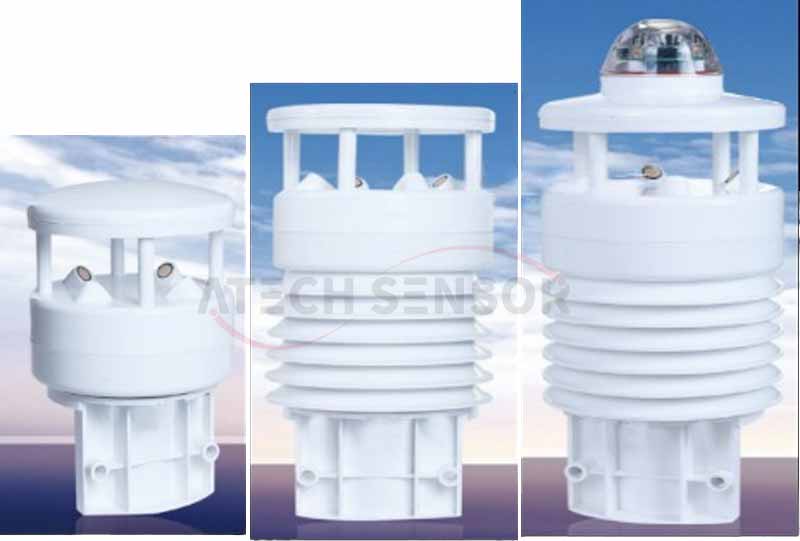
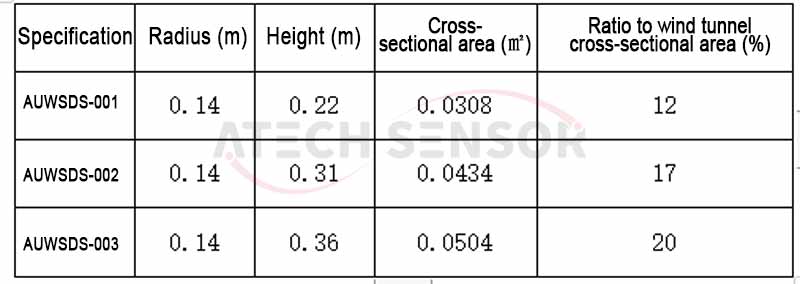
The influence of volume on wind speed

1)When the inverter frequency value is the same, measure the wind speed at 8 points of the standard instrument under four conditions A~D, and record them in the following table:
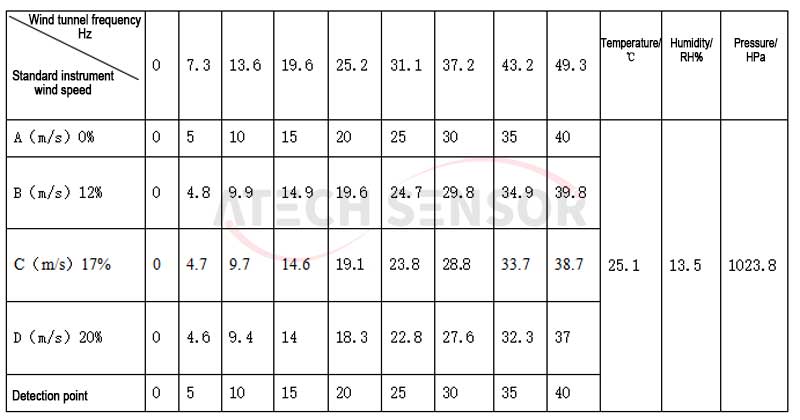
2) Wind tunnel pitot tube wind coefficient for different measured objects
Based on the data in the table above, with the detection point value as the horizontal axis and the measured value as the vertical axis, the B, C, and D values are compared to obtain the influence of the three measured objects on the wind tunnel pitot tube wind speed.
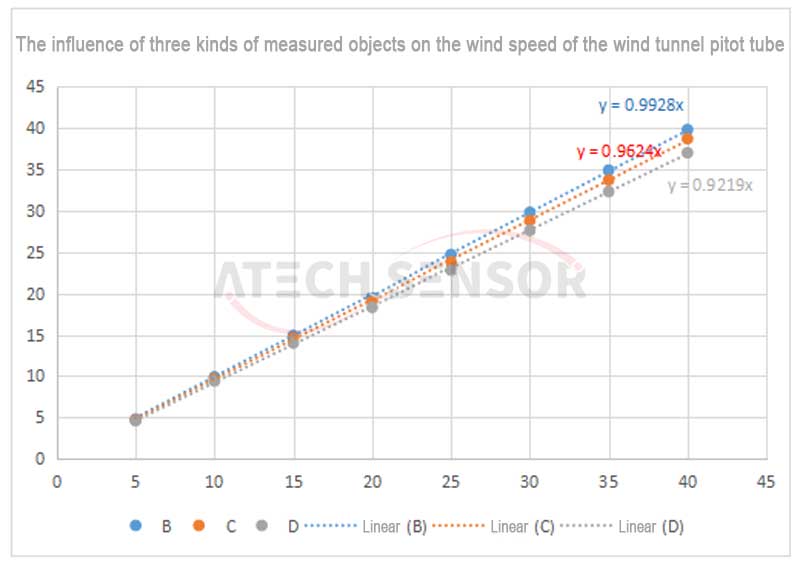
According to the straight line in the figure above, the Pitot tube wind coefficients under three conditions are Kb=0.9928, Kc=0.9624, Kd=0.9219
3) Relationship between cross-sectional area ratio and Pitot tube wind coefficient
According to the above figure, with the cross-sectional area ratio as the horizontal axis and the measured wind coefficient as the vertical axis, the relationship between the wind coefficient and the cross-sectional area ratio is as follows:
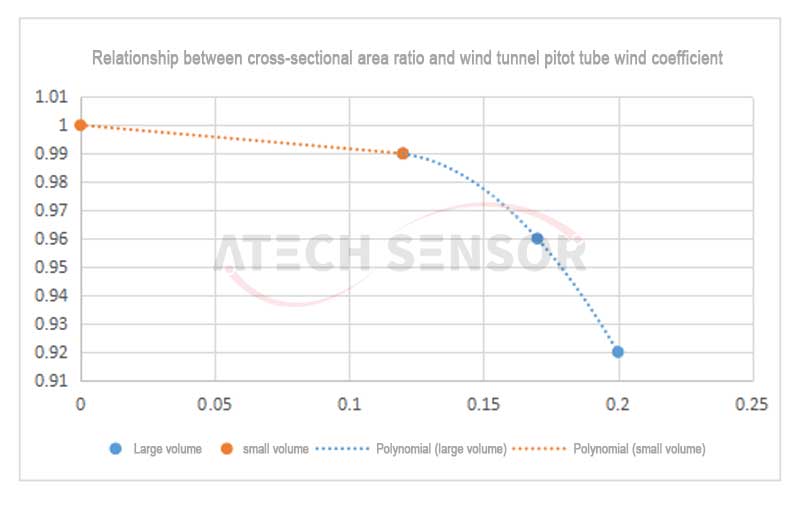
4. Conclusion of Ultrasonic Wind Speed and Direction Sensor
Due to the effect of wind resistance, objects in the wind tunnel will affect the results of the Pitot tube anemometer. When the length of the object and the cross-sectional area of the wind tunnel are constant, the larger the cross-sectional area and the larger the volume, the greater the attenuation of the Pitot tube wind coefficient. Within a certain range, as the volume increases, the attenuation rate increases. Therefore, in order to make the anemometer more accurate during measurement, it is necessary to eliminate the interference of volume wind resistance through algorithms and coefficient calibration.

